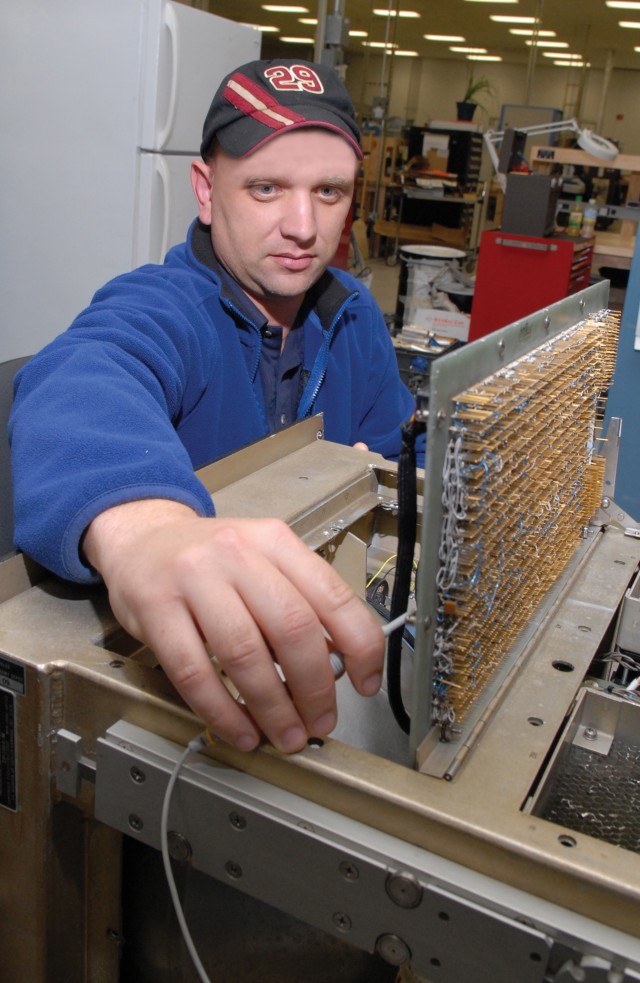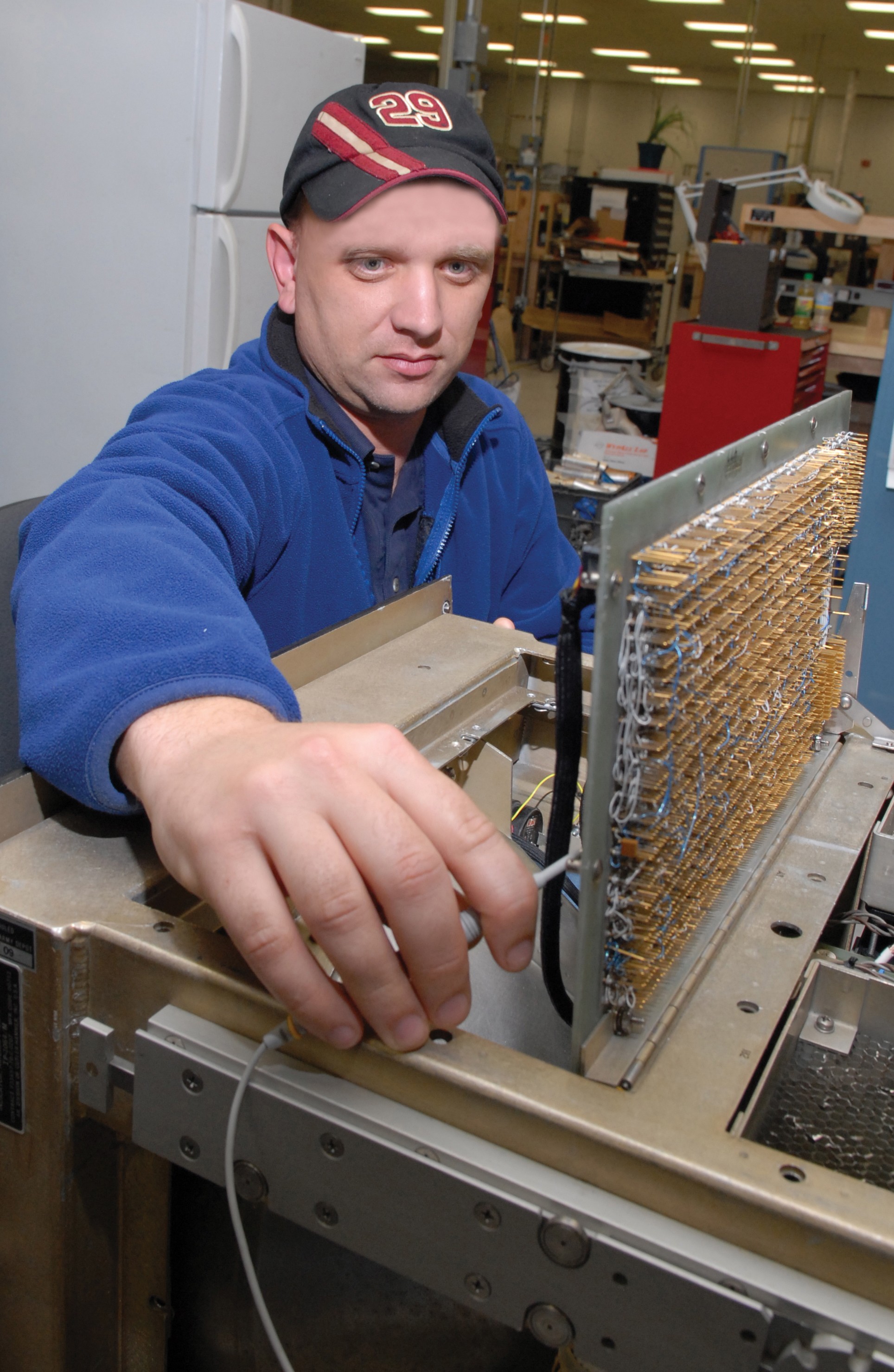TOBYHANNA ARMY DEPOT, Pa. - When it comes to mission capability (MICAP) items, technicians in the Interrogator Branch "get them in, get them done and get them out," and these Air Force items take precedence over daily requirements.
MICAP items are overhauled throughout the depot. Technicians in the Surveillance Systems Division's Interrogator Branch repair many MICAPs in support of the Air Traffic Control and Landing Systems (ATCALS) and the Ground Theatre Air Control System (GTACS) Air Force Program Offices. Branch technicians have overhauled about 15 MICAP assets since the beginning of this fiscal year.
"MICAP is backorder for a critical part that prevents a weapon system from achieving fully mission capable status," explains Chris Flint, former Air Force liaison for the depot, and the chief of the Intelligence, Surveillance and Reconnaissance (ISR) ATCALS Division.
Air Force personnel focus on Lean logistics, says Joe Lynott, chief of the Interrogator Branch, ISR Directorate. "They don't stockpile assets. Having items on a shelf is not cost effective," he explains, noting that when they are down to their last "spare," they request these items to be overhauled as a MICAP item, which normally occurs when mission capability is in jeopardy.
Branch technicians receive and repair MICAP items such as power supplies and aircraft identification indicators. These items are part of the AN/TPX-42A Interrogator Set, which provides for the transmission, reception, and processing of identification friend or foe (IFF) signals. The Interrogator Set is used in systems such as the AN/MPN-14K, which coordinates aircraft information with local airports and bases, and the AN/TPN-19, which is used for tactical air traffic control and landing at deployed locations.
"These items are a priority and need to be repaired as soon as possible, so we [use a lot of] resources on [the MICAPs] to get them out the door," explains Stan Wood, a production controller in the Production Management Directorate's Surveillance Threat/Emitter Branch. Production controllers adjust schedules to accommodate MICAPs. Turnaround time is expedited on MICAPs.
Technicians often work 12 hours a day, six or seven days a week, Wood notes.
Alan DeNero, electronics mechanic in the branch, explains that when a MICAP power supply comes into the branch he gathers the technicians that work on the item.
"We tell them we have a MICAP in and that it takes priority over everything else," DeNero said.
DeNero leads a team of three technicians who overhaul and repair the power supplies for the Interrogator Set.
When dealing with MICAPs you need to have a firm handle on what parts are available, DeNero explains, adding that "[Branch] technicians are trying to make the power supplies better by implementing 100 percent replacement parts."
These high failure item parts are always replaced on the item when it comes in for overhaul, regardless of its condition or workability. The replaced parts were determined by collecting "failure data" over the past 18 months, which has shown technicians which items should be replaced.
The 100 percent replacement part implementation is part of a Green Belt project that DeNero is currently working on, in conjunction with Clark Ross, directorate product improvement specialist, which will help to improve the branch's overhaul process and product reliability.
When items come in as a MICAP, a technician immediately troubleshoots the item. Troubleshooting is a form of problem solving that is applied to the repair of failed products or processes.
"Why are they [not working]; that's the challenge," explains John Balasavage, electronics mechanic in the branch, who is part of the product line that repairs the multi-voltage power supply.
Although the technicians in the Interrogator Branch repair and overhaul various items, they agree on one thing; someone might need the item, so they "hustle to get it out."
Tobyhanna Army Depot is the Defense Department's largest center for the repair, overhaul and fabrication of a wide variety of electronics systems and components, from tactical field radios to the ground terminals for the defense satellite communications network. Tobyhanna's missions support all branches of the Armed Forces.
About 5,600 personnel are employed at Tobyhanna, which is located in the Pocono Mountains of northeastern Pennsylvania.
Tobyhanna Army Depot is part of the U.S. Army CECOM Life Cycle Management Command. Headquartered at Fort Monmouth, N.J., the command's mission is to research, develop, acquire, field and sustain communications, command, control computer, intelligence, electronic warfare and sensors capabilities for the Armed Forces.


Social Sharing